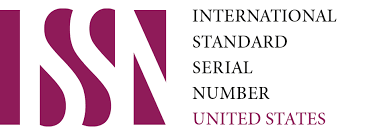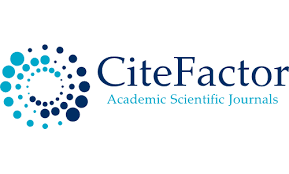Strategic Behavior and Role in Organizational Excellence, Senior Leadership Sample Field Research at University of Karbala
Keywords:
Strategic Behavior, Organizational ExcellenceAbstract
The current research aims to identify the level of strategic behavior in the organization in question and its impact on organizational excellence. The organization in question was the University of Karbala, and the sample included senior leaders from department managers and above, with some (85) people. A strategy followed by the organization under study was based on the model (Miles and Snow, 1978) and its impact on achieving organizational excellence, and some statistical methods were relied on to process the data obtained from the questionnaire from the (spss) and (Amos.23) program, such as percentages and arithmetic mean The standard deviation, the coefficient of variation, the normal test, and the certainty factor, and to know the correlation between the two variables, the simple correlation coefficient (Pearson) was relied upon. As for the effect of the independent variable on the dependent, the simple regression coefficient was used. The surveyed organization suffers from a decrease in the number of young leaders occupying leadership positions and the existence of a complex hierarchical organizational structure that is reflected this is due to the slowness of the procedures they are taking. The current research recommended conducting training courses to qualify leaders in the university administration to be able to achieve administrative excellence, which is reflected in human, structural, and strategic excellence.
References
alaloul, w. s., liew, m. s., zawawi, n. a. w., mohammed, b. s., adamu, m., &musharat, m. a. (2020), structural equation modelling of construction project performance based on coordination factors. cogent engineering, 7(1), pp.1-25
andrews, rhys; boyne, george a.; law, jennifer; walker, richard m(2009), strategy formulation, strategy con- tent and performance. public management review, v. 11, n. 1, p. 1-22.
bakker, a. b. (2017), strategic and proactive a roaches to work engagement. organizational dynamics, 46, 67-75. doi:10.1016/j.organ.2017.04.002
blackmore, k., & nesbitt, k. (2012), verifying the miles and snow strategy types in australian small- and medium-size enterprises. australian journal of management, 38(1), 171–190. doi:10.1177/0312896212444692
cassol, a., cintra, r. f., ribeiro, i., oliveira, a., & lorandi, b. (2019), measurement of the strategic behavior of micro and small-sized enterprises: an analysis su orted by the miles and snow typology (1978). revista adm. made, 23(1), 105-125.
daradkah, amjad (2017) ,administrative empowerment and its relationship to organizational excellence with academic leaders at taif university from the faculty members perspective," an-najah university journal for research - b (humanities): vol. 31: iss. 8 , article 1. available at: https://digitalcommons.aaru.edu.jo/anujr_b/vol31/iss8/1
dill, w. r(1958), environment as an influence on managerial autonomy ,administrative science quarterly v. 2(4), p. 409-443
duncan, r. b. (1972) characteristics of organizational environments and perceived environment album certainty. administrative science quarterly, v. 17, p. 313-327.
emery, f.; trist, e. l(1965). the causal texture of organizational environments. human relations. v. 18, p. 21-32.
ershadi, m.j. and eskandari dehdazzi, r (2019), "investigating the role of strategic thinking in establishing organizational excellence model: a moderating role of organizational forgetting", the tqm journal, vol. 31 no. 4, . 620-640. https://doi.org/10.1108/tqm-05-2018-0062
ghali, b. a. a., habeeb, l. m., & hamzah, k. d. (2018), self-management and its relation to organizational excellence. international journal of engineering and technology (uae), 7(4), 47-50
gravley-stack, k. e. (2014), achieving inclusive excellence: the role of change agents and institutional artifacts in diversifying institutions (doctoral dissertation, north dakota state university).
gupta, badrilal(2021), organizational structure for excellence, business manager vo. 11 no. 11 , pp20091-20093
hambrick, d. c. (1983),some tests of the effectiveness and functional attributes of miles and snow's strategic types. academy of management journal, 26(1), 5–26. doi:10.5465/256132
hannan, m.; freeman, j (1977), the population ecology of organizations. american journal of sociology, v. 82, n. 5, p. 929-964
harrington, h. (2007). the five pillars of organizational excellence. in ieee engineering management review (vol. 34, issue 4, . 73–73). https://doi.org/10.1109/emr.2006.261408
ingram,t.,kraśnicka,t.,wronka-pośpiech,m.,głód,g. & głód,w.(2016) .relationships between miles and snow strategic types and organizational performance in polish production companies. central european management journal,24(1) 17-45. https://doi.org/10.7206/jmba.ce.2450-7814.162
karim, s.m., sadq, z.m. and al-ahmedi, m.w. (2016). equity capital sovereignty and country's economical change. international journal of research in social sciences and humanities. 6(2): 1-9
katz, d.; kahn, r. l. (1987),social psychology of organizations, 3. ed. são paulo: atlas.
khalaf, wasan fadel., ajaj, muhammad naim., khalaf, karrar razzaq (2021), the impact of organizational excellence on creativity-oriented sustainability practices, journal of educational research and petroleum studies, no. 30, pages (80-99).
kosslyn, s. m., & rosenberg, r. s. (2001),psychology: the brain, the person, the world. boston: allyn & bacon
nami, y., & koizumi, r. (2013). structural equation modeling in educational research. in application of structural equation modeling in educational research and practice sensepublishers, rotterdam (pp. 23-51). https://scholar.google.com/scholar?q=structural+equation+modeling+in+educational+research:+a+primer&hl=ar&as_sdt=0&as_vis=1&oi=scholart
rocha, da a. c., ceretta, g. f., & battisti, c. (2016). análise do comportamento estratégico das empresas localizadas no município de vitorino–pr. revista gesto, 4(2), 13-27.
rossetto , carlos ricardo (2000), o comportamento estratégico segundo a teoria de miles e snow: um estudo multicaso em três empresas familiares na indústria da construção civesil://proce. /biblioteca/enegep2000_e0063.pdf
sadq, z. m. (2020). the role of strategic alignment of business strategies according to the (miles & snow) model on strategic success. qalaai zanist scientific journal, 5(4), 677-706.
soares, m. l., de paula teixeira, o. r., & pelissari, a. s. (2011). organizational behavior-an a lication of the typology of miles and snow in the hospitality industry from florianopolis-sc. revista de administração da ufsm, 4(2), 251-267.
sollosy, marc., rebecca m. guidice, k. praveen parboteeah, (2019) “miles and snow's strategic typology redux through the lens of ambidexterity”, international journal of organizational analysis, https://doi.org/10.1108/ijoa- 05-2018-1433
tanner, s. (2005), an investigation into how business excellence can contribute to sustained organizational performance in both private and public sector organizations (doctoral dissertation, university of reading).
walker, r. m. (2013). strategic management and performance in public organizations: findings from the miles and snow framework. public administration review, 73(5), 675–685. doi:10.1111/puar.12073
wronka-pospiech, m., & fraczkiewicz-wronka, a. (2016). strategic orientation and organisational culture in polish public organisations: insights from the miles and snow typology. management, 20(1), 126.
Downloads
Published
Issue
Section
License

This work is licensed under a Creative Commons Attribution-NonCommercial 4.0 International License.
User Rights
Under the Creative Commons Attribution-NonCommercial 4.0 International (CC-BY-NC), the author (s) and users are free to share (copy, distribute and transmit the contribution).
Rights of Authors
Authors retain the following rights:
1. Copyright and other proprietary rights relating to the article, such as patent rights,
2. the right to use the substance of the article in future works, including lectures and books,
3. the right to reproduce the article for own purposes, provided the copies are not offered for sale,
4. the right to self-archive the article.













